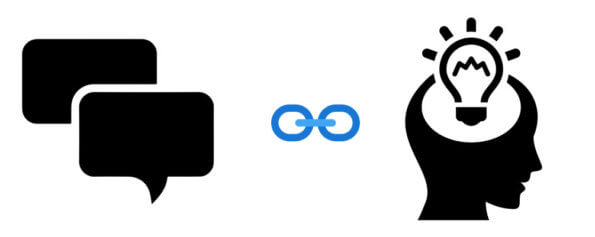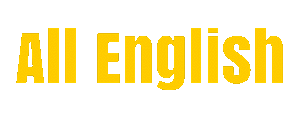Concept Mapping in ESL
If anyone has followed my thoughts on teaching English as a second language, they know that I believe that teaching with written materials, especially in the early stages of learning, is detrimental to the learning process. To understand this fully, you need to have an understanding of concept mapping in the brain.
As children, we learn language by associating sounds we hear with a concept. We hear our mother say, “Do you want some milk? Here’s your milk.” And over time, we figure out that the sound “milk” means the white fluid stuff that tastes so good. We connect or map the sound of the word milk to the idea or concept of milk.

By contrast, in traditional English language classes, the focus is on written communication. So we learn to associate words (written symbols) with concepts. We use definitions, translations and synonyms, rather than direct experience, to derive the meaning of those four letters: MILK.

The problem with teaching English by focusing on written language is related to the way we mentally map concepts. With a focus on written language, what we learn first is a symbol, a written word, to which we assign meaning, i.e. the letters BANANA when appearing together refers to a long yellow fruit. We are connecting those two things mentally. That’s mapping. We map the visual symbol (BANANA) to the concept of long yellow fruit.
Later, when the student is introduced to spoken English, they need to connect or map the sound of the word, which is novel input, with the concept that already exists. But a problem occurs. They have been taught that English writing is phonetic; that there is a direct connection between the symbol and the sound. So instead of mapping a sound directly to meaning, they try to map the sound to the symbol. As they listen to the speech stream, they try to identify the sound that goes with the symbol BANANA. This creates issues and interferes with learning in a couple of ways.
Firstly, instead of a one to one mapping, ex. BANANA (the symbol) = long yellow fruit (the concept), we have a chain of mapping processes involving three elements. The learner is listening for specific sounds in the sound stream that they can connect with the word (the written symbol) and then they connect the word with the concept or the meaning, i.e. sound > symbol > concept. For example, they hear buh-na’-nuh and they learn to recognize that it is related to the letters BANANA which they recognize as a long yellow fruit. This places a larger cognitive load on the learner as they try to map sounds to meaning through the written word as the intermediary. It’s a task that’s made even more difficult because of the speed of speech.

Secondly, there is no direct correlation between the symbol and the sound, so the mapping of the two is nearly impossible without large amounts of repeated input. Let’s continue looking at BANANA as an example. Visually, the word BANANA looks like three equally spaced syllables with three A sounds. But the verbal pattern is very different. It’s buh-naaa’-nuh. Neither the syllable sounds or the length of the syllables match. As a result, they can’t connect the sound to the symbol. They are confused by what seems to be a completely unrecognizable spoken language. They have no idea what the sound buh-naaa’-nuh means. The mapping chain is broken.

Language is first and foremost oral. It’s been that way for millennia. Writing is just a tool for representing the sounds produced in oral communication. It’s a relatively new technology and has only been in common use for a few hundred years. More importantly, it’s broken. So it just makes sense to first map the sounds to meaning when trying to learn to communicate through language. Once that sound-meaning concept map is entrenched in the brain, then you can start introducing the representational symbols for the sounds.












